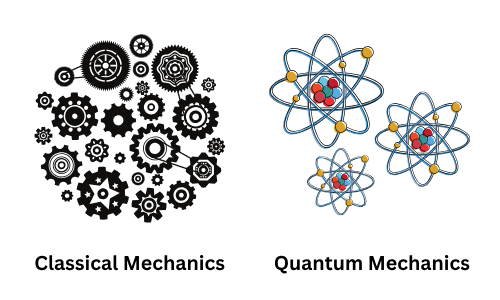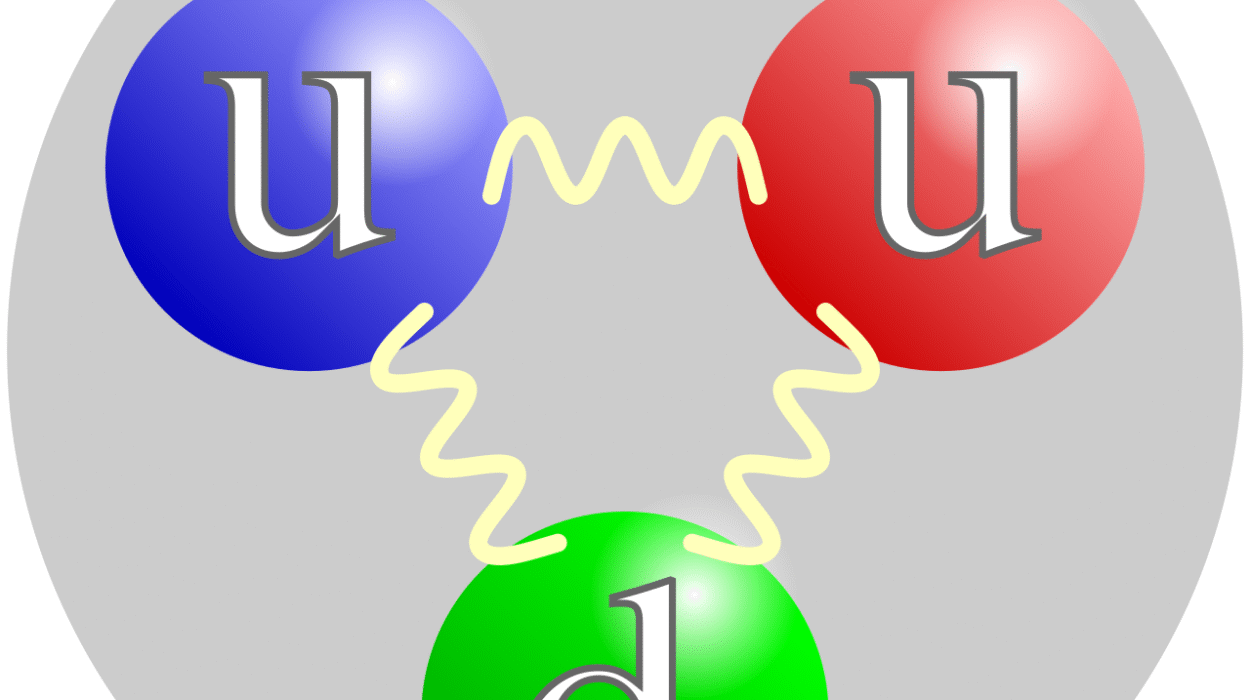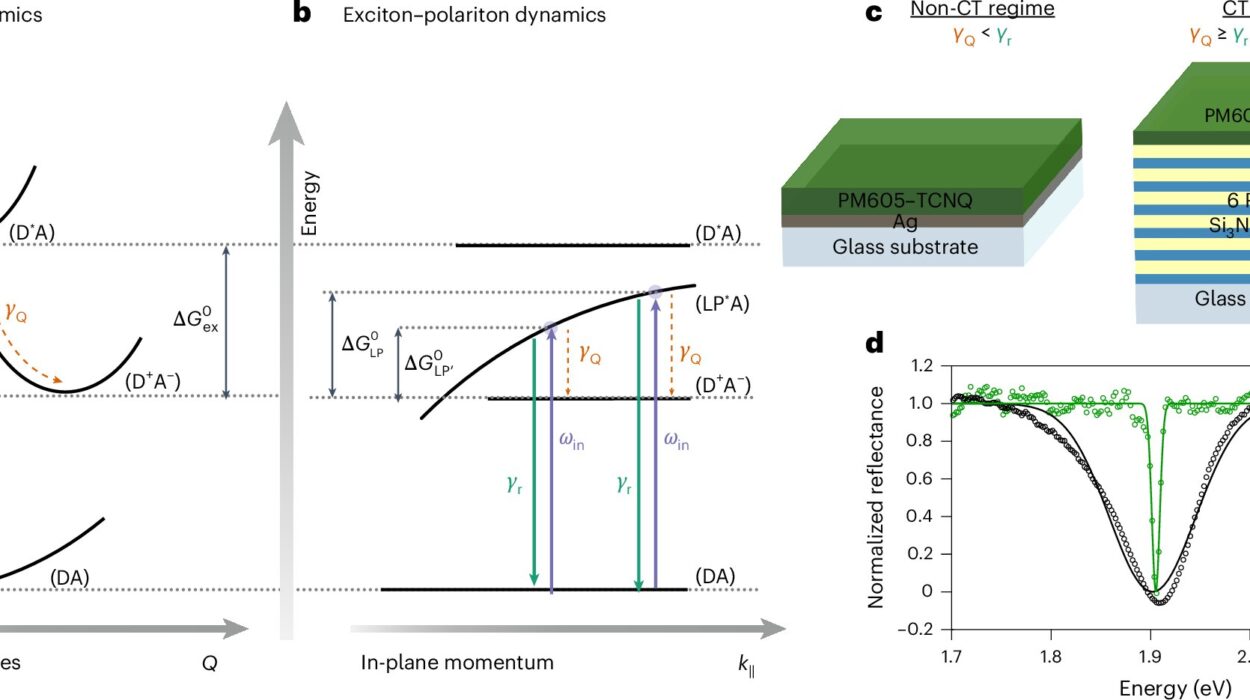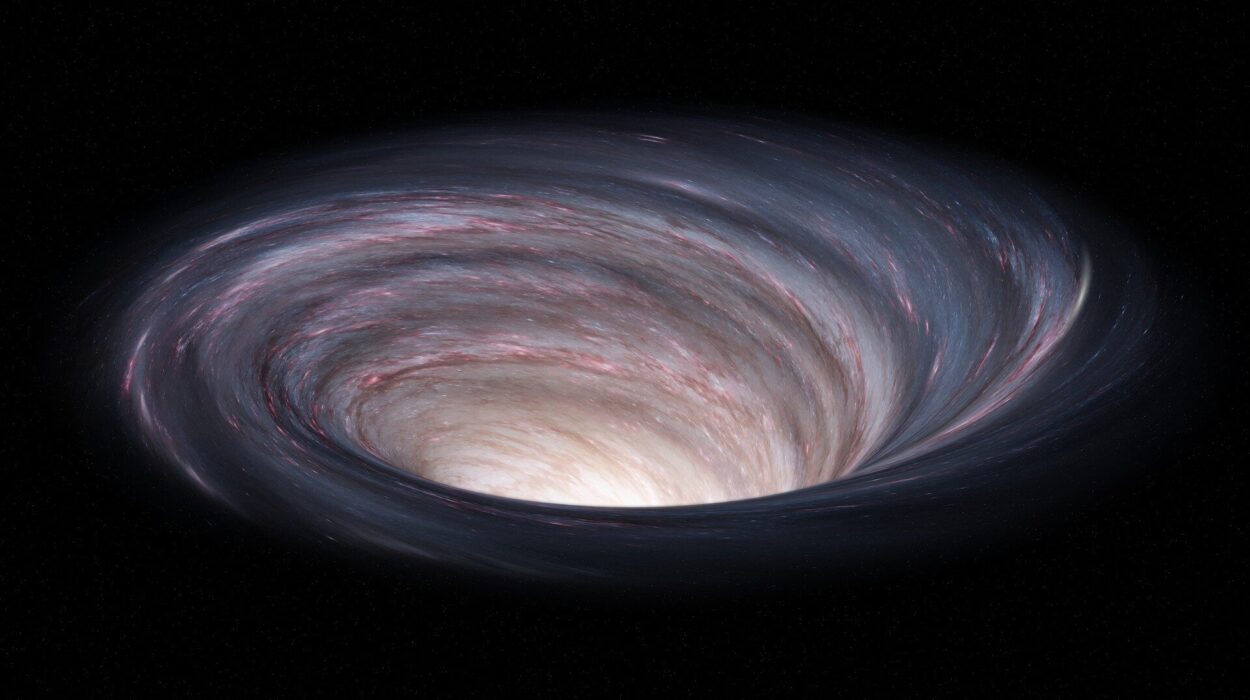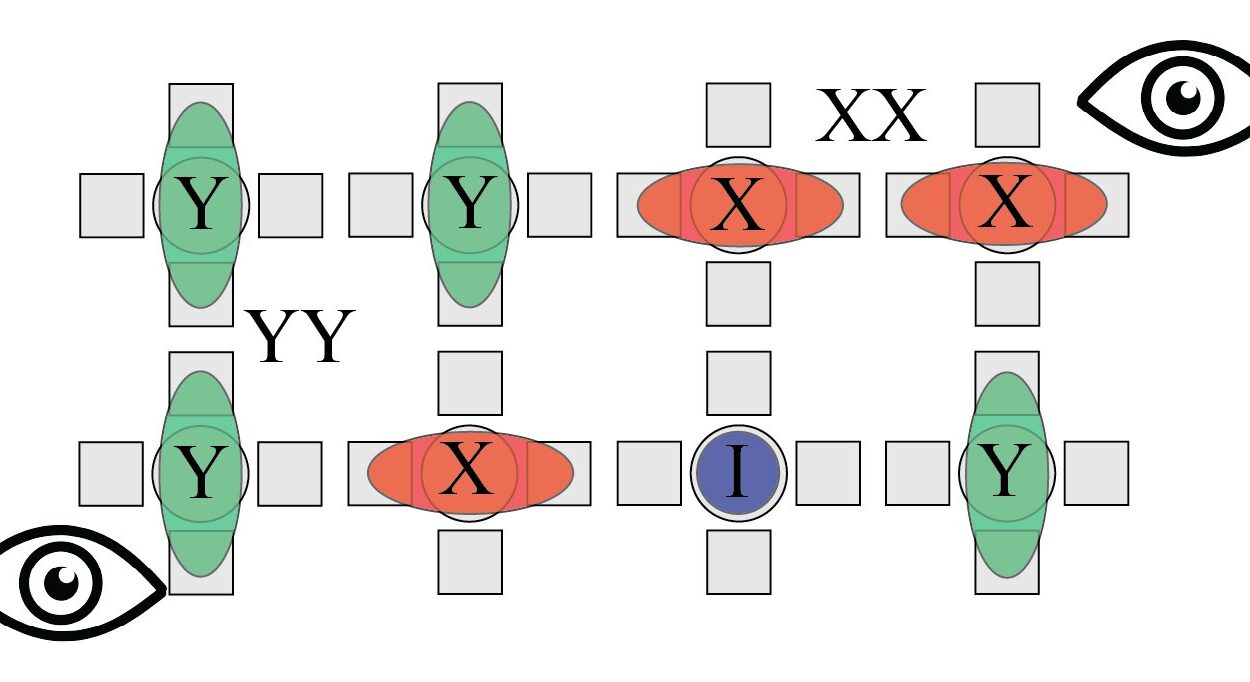Physics, at its core, is humanity’s endeavor to decode the language of the universe. From the orbits of planets to the mechanics of machines, the behavior of light, and the very fabric of time—physics attempts to explain how everything works. But somewhere along the line, science encountered a rift. The world behaved one way when you looked at apples falling from trees or cannonballs flying through the air, and entirely differently when you zoomed in on atoms and electrons. This divide gave rise to two monumental pillars in physics: classical and quantum.
Classical physics is the physics of the everyday. It governs the macroscopic world we experience through our senses. It is the domain of Newton, Maxwell, and Einstein—of forces, motion, and gravity. It tells us how the planets move, how a car engine runs, and how a bridge stands. It is elegant, intuitive, and, for a long time, it seemed complete.
Quantum physics, on the other hand, is the realm of the very small. It is the physics of atoms, subatomic particles, and the strange, probabilistic dance of matter and energy at the smallest scales imaginable. It is counterintuitive, often baffling, and full of paradoxes that challenge our most fundamental notions of reality. It is where particles can be in two places at once, where observation changes outcomes, and where cause and effect can seem like afterthoughts rather than laws.
So what is the real difference between classical and quantum physics? Why do we need two different theories to describe one universe? And what does this split tell us about the nature of reality itself?
To answer these questions, we must journey through the history of scientific thought, explore the breakthroughs and paradoxes that gave rise to quantum mechanics, and ultimately confront the mysteries that still puzzle physicists today.
The Clockwork Universe of Classical Physics
When Isaac Newton published his Philosophiæ Naturalis Principia Mathematica in 1687, he did more than lay the foundation for classical mechanics—he gave the world a new way to understand existence. Newton’s laws of motion and his universal law of gravitation were not just rules; they were revelations. They suggested that the universe was governed by clear, deterministic laws. If you knew the position and velocity of every object in the universe, you could predict the future with perfect accuracy. The universe, in this view, was a grand machine—a cosmic clock, ticking with flawless precision.
This vision of a mechanical, predictable universe came to dominate scientific thought for centuries. From the trajectories of cannonballs to the orbits of moons, Newton’s laws worked. Later, James Clerk Maxwell expanded classical theory to include electromagnetism, unifying electricity and magnetism in a set of elegant equations that predicted the behavior of light and radio waves. Thermodynamics, another pillar of classical physics, described heat, work, and energy with mathematical clarity. In the 19th century, classical physics reached its zenith. It seemed that science had all the answers.
But there were cracks in the edifice.
The Twilight of Certainty: Birth of the Quantum
At the end of the 19th century, a few phenomena defied explanation by classical physics. One of the most infamous was blackbody radiation. According to classical theory, a blackbody—a perfect absorber and emitter of radiation—should emit infinite energy at short wavelengths, a prediction that became known as the “ultraviolet catastrophe.” Clearly, something was wrong.
Enter Max Planck, who, in 1900, proposed a radical solution: energy is not continuous, but quantized. That is, energy comes in discrete packets—quanta. Planck didn’t fully grasp the implications of his theory, but he had opened the door to a new world.
In 1905, Albert Einstein took it further. He explained the photoelectric effect—where light hitting a metal surface ejects electrons—by proposing that light itself was quantized. Photons, he said, were particles of light. This idea challenged the wave theory of light and suggested a dual nature—sometimes wave, sometimes particle. It was unsettling, but it matched the data.
Then came Niels Bohr, Werner Heisenberg, Erwin Schrödinger, and a host of others, each adding pieces to the puzzle. By the 1920s, quantum mechanics had taken shape. It was not merely a refinement of classical physics; it was something else entirely. It was a new language for a different universe.
The Language of Quantum: Probability, Uncertainty, and Duality
One of the most startling aspects of quantum physics is its departure from determinism. In the classical view, if you know the initial conditions of a system, you can predict its future precisely. Quantum mechanics says: not so fast.
At the heart of quantum theory lies the wavefunction, a mathematical description of a system’s state. But the wavefunction doesn’t tell you what will happen—it tells you the probabilities of various outcomes. A particle isn’t here or there; it’s described by a probability distribution. Only when you observe it does it “collapse” into a definite state.
Heisenberg’s uncertainty principle takes this even further. It states that you cannot simultaneously know both the position and momentum of a particle with arbitrary precision. The more precisely you know one, the less precisely you know the other. This is not a limitation of measurement; it is a fundamental property of nature.
Then there’s wave-particle duality. Light can act as a wave, exhibiting interference patterns in a double-slit experiment. But it can also act as a particle, knocking electrons off a metal surface. Electrons, too, show this duality. They can diffract like waves, interfere with themselves, and yet strike a screen like particles. This duality defies our classical intuitions.
Quantum entanglement adds another twist. When two particles are entangled, measuring one instantaneously affects the state of the other, no matter the distance between them. Einstein called this “spooky action at a distance,” and he didn’t like it. But experiments have confirmed it. The universe, it seems, is deeply interconnected in ways classical physics cannot explain.
The Measurement Problem: Who’s Watching?
One of the great philosophical puzzles of quantum mechanics is the measurement problem. In the quantum world, particles exist in a superposition—a blend of all possible states—until measured. But what constitutes a “measurement”? Why does observation cause the wavefunction to collapse?
The famous thought experiment of Schrödinger’s cat dramatizes this dilemma. A cat is placed in a box with a radioactive atom, a Geiger counter, and a vial of poison. If the atom decays, the Geiger counter triggers the release of the poison, killing the cat. According to quantum mechanics, until the box is opened, the atom is in a superposition of decayed and not decayed, and the cat is simultaneously alive and dead. Only observation determines the outcome.
This raises profound questions. Does consciousness cause collapse? Is the universe indeterminate until observed? Different interpretations offer different answers. The Copenhagen interpretation says the observer plays a crucial role. The many-worlds interpretation suggests that all outcomes occur, but in parallel universes. The pilot-wave theory restores determinism but at the cost of introducing hidden variables.
There is no consensus. The measurement problem remains a thorn in the side of quantum theory, highlighting its strange departure from classical realism.
Compatibility or Collision: Can the Two Coexist?
Given their profound differences, how do classical and quantum physics coexist? The answer lies in scale. Quantum effects dominate at the atomic and subatomic level. But as systems grow larger and involve more particles, quantum probabilities average out, and classical behavior emerges. This is known as the correspondence principle: quantum mechanics must agree with classical physics in the limit of large systems.
In practice, engineers and scientists use classical physics to build airplanes, design buildings, and launch satellites. Quantum mechanics, however, governs the design of semiconductors, lasers, and MRI machines. Both theories are essential. They operate in different regimes but are linked.
Yet, the quest for a unified framework continues. Physicists seek a theory that encompasses both. Quantum field theory already merges quantum mechanics with special relativity. But reconciling quantum mechanics with general relativity—the theory of gravity—remains elusive. This is the goal of quantum gravity, string theory, and loop quantum gravity. These theories aim to describe everything—from the smallest particles to the largest galaxies—with a single, coherent set of laws.
Philosophical Implications: What is Reality?
The clash between classical and quantum physics is not just scientific—it is philosophical. Classical physics paints a world of objective reality, where things exist independently of observation. Quantum physics suggests a world where reality is probabilistic, observer-dependent, and possibly non-local.
This raises age-old questions: Is the universe deterministic or random? Does the act of observation create reality? Is there a deeper layer of reality beneath quantum mechanics, or is this as fundamental as it gets?
Einstein, for one, believed quantum mechanics was incomplete. “God does not play dice,” he famously said. He hoped for a more complete theory that would restore determinism. Others, like Bohr, embraced the weirdness. “The opposite of a profound truth may well be another profound truth,” he said, accepting the dualities and uncertainties as part of nature’s essence.
Modern physicists are still divided. Some seek hidden variables. Others look for experimental evidence of many worlds. Some accept the mystery and focus on making predictions. But all agree: quantum mechanics works. It has been confirmed to astonishing precision. The debate is not about its success, but its meaning.
The Technological Frontier: Classical Meets Quantum
The difference between classical and quantum physics is not just academic—it is practical. Quantum mechanics has ushered in a technological revolution. Transistors, the building blocks of computers, rely on quantum tunneling. Lasers depend on stimulated emission. Quantum dots, superconductors, and atomic clocks—all stem from quantum principles.
Now, we stand on the brink of a new era: quantum technology. Quantum computing promises to solve problems intractable for classical computers, using qubits that exploit superposition and entanglement. Quantum cryptography offers unbreakable security, based on the impossibility of cloning quantum states. Quantum sensors could detect gravitational waves, map brain activity, and explore Earth’s interior with unprecedented precision.
In these technologies, the classical and quantum worlds converge. Engineers must understand both regimes. Devices must translate quantum phenomena into classical outputs. The frontier is not a line but a bridge.
Conclusion: Two Theories, One Universe
The divide between classical and quantum physics reflects the complexity of the universe. Classical physics describes the world as we experience it—tangible, predictable, and orderly. Quantum physics reveals a deeper layer—uncertain, probabilistic, and strange.
But these are not rival theories; they are complementary. Like two lenses offering different views of the same reality, they reveal different aspects of the cosmos. Each is valid in its domain. Each has its rules, its language, its logic.
The real difference between classical and quantum physics lies not just in equations, but in perspective. Classical physics sees the universe as it appears. Quantum physics sees the universe as it is—beneath the surface, beyond certainty, dancing to rhythms we are only beginning to understand.
In the end, the journey from Newton to Schrödinger is not just a tale of scientific progress. It is a journey into the heart of reality, a voyage of human curiosity, and a testament to the enduring mystery of existence. For as strange as the quantum world may be, it is our world. And the more we learn, the more we realize how much we have yet to discover.
